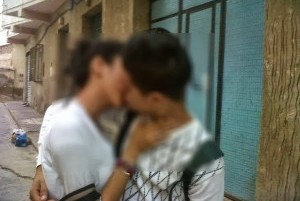The music of Egypt is a Keystone of their culture. They credit one of their gods with its invention, and it was used by Osiris to help civilize ancient groups. The music is very distinct from western music, and in western music the “Egyptian Scale” was formed in honor of this distinction. The music was used during daily life in ancient Egypt, and is said to be at least 5000 years old.
“All the major categories of musical instruments were represented in pharaonic Egypt.” This includes percussion instruments like drums and rattles and a “sistrum,” which was used especially in religious practices. Wind instruments like flutes and trumpets were played, and even stringed instruments like harps lyres and lutes. Hand-clapping was also played in rhythm with the music.
However, today music in Egypt is changing; perhaps as a reaction to the turmoil surround the artists creating the music. Though traditional Egyptian music still exists, some artists have taken in other influences, especially influences from the west.
Okka and Ortega are two of the “fastest-rising stars in Egypt,” which has the Arab world’s largest music market. The two men play music I consider to sound like America’s rap music, but with a revolutionary twist. “The music is a rowdy blend of traditional Egyptian wedding music, American hip-hop.” “The singing is fast, often improvised and heavily doctored with Auto-Tune.” Because of the turmoil that’s been going on, they find themselves voicing opinions about social issues. The genre of music is called “mahraganat,” which means “festivals” in Arabic.
Their music can be heard playing everywhere, “blasting from taxis, rocking boats on the Nile and jangling from cellphones.”
Their music, at first though, was not about politics. They were at first sort of typical, dealing with drugs, sex and friendship. Since the anti-Mubarak uprising, their lyrics and songs changed. Young raucous people, mostly revolutionaries, began to seek out this rebel music. Some of their songs after the Mubarak was ousted include “The people and government,” and “Hit on Her, Yes. Harass Her, No.”
A man who watched one of the artist’s grow up said that “You don’t understand three-fourths of the lyrics, but then you hear a something good and realize the whole song relates to you.”
Music Video: http://www.youtube.com/watch?v=5sJ5nFpiXYo
Sources:
http://www.nytimes.com/2013/05/12/world/middleeast/egypts-chaos-stirs-musical-revolution.html?_r=0
http://www.phmusic.gov.eg/en/index.html
http://www.umich.edu/~kelseydb/Exhibits/MIRE/Introduction/AncientEgypt/AncientEgypt.html




